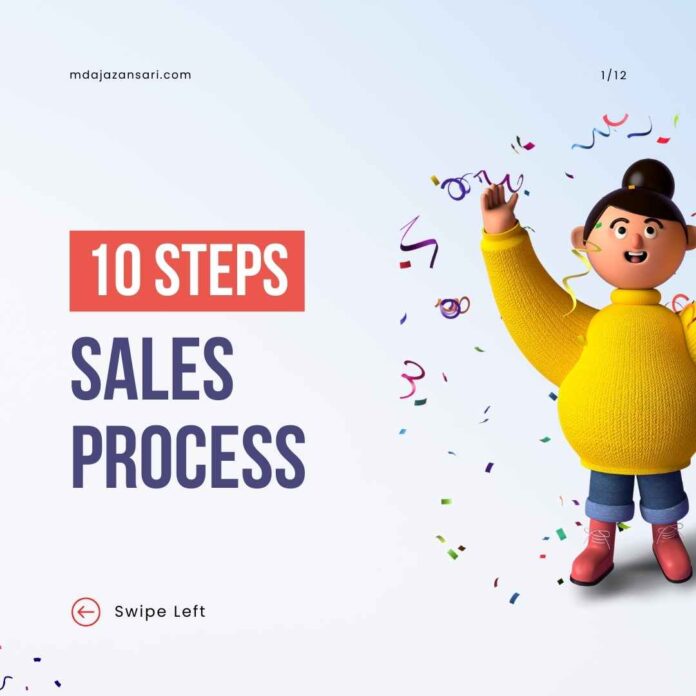Whether you’re a seasoned sales professional or just starting in the world of sales, having a well-defined and structured sales process is crucial for success. Each step in the process plays a unique role in moving potential leads toward becoming loyal customers.
Note: To Download The PDF (Scroll Down To The End)
Let’s break down the sales process into 10 essential steps:
1. Prospect
Source Leads to Contact or Gather Leads From Marketing

The journey begins by identifying potential leads. You can find these prospects through various marketing efforts, including advertising, content marketing, or referrals. The goal here is to cast a wide net to identify individuals or companies that might have an interest in your product or service.
2. Qualify
Compare the Lead to the Ideal Customer Persona

Not all leads are created equal. It’s essential to assess whether a lead fits your ideal customer profile. This step ensures that you’re investing time and resources in prospects most likely to convert into customers. Qualification criteria can include factors like demographics, budget, and need.
3. Connect
Call, Email, or Meet with the Prospect

Once you’ve identified and qualified a prospect, the next step is to establish contact. This can be done through phone calls, emails, or face-to-face meetings. The goal is to initiate a conversation and establish rapport with the prospect.
4. Identify Pain/Needs
Ask the Prospect Questions to Understand Their Issue
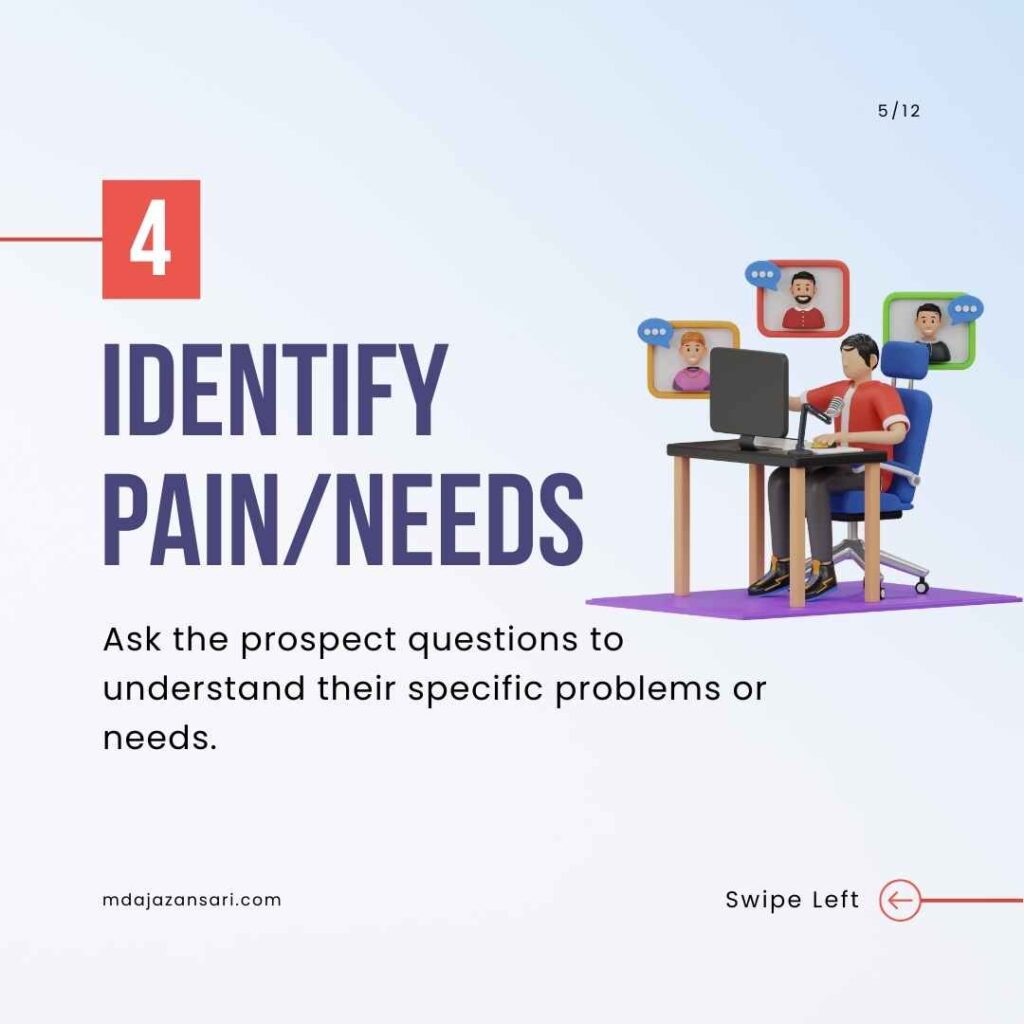
Understanding your prospect’s pain points and needs is fundamental. Ask questions to delve into their challenges and objectives. The more you understand their situation, the better you can tailor your solution to meet their specific needs.
5. Present
Present or Demo Your Product/Service to Stakeholders

Now, it’s time to showcase your product or service. Provide a compelling presentation or demonstration that highlights how your offering can address the prospect’s pain points. Make sure to involve all relevant stakeholders in this process.
6. Handle Objections
Address Any Doubts the Prospect Might Have
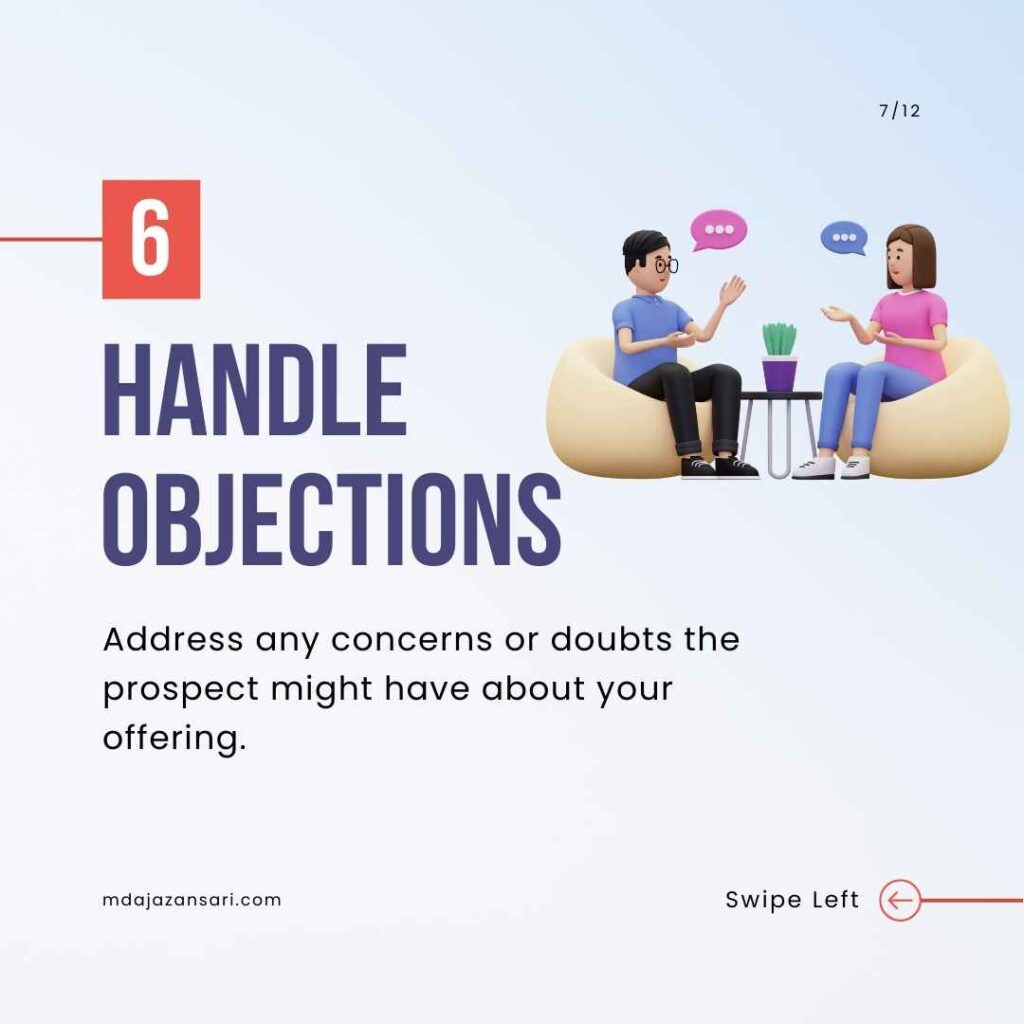
Prospects often have concerns or objections. It’s your job to address these doubts, providing clear and convincing responses to reassure them. Effective objection handling can be the turning point in closing a deal.
7. Issue Proposal
Draw Up a Proposal and Present It to Stakeholders
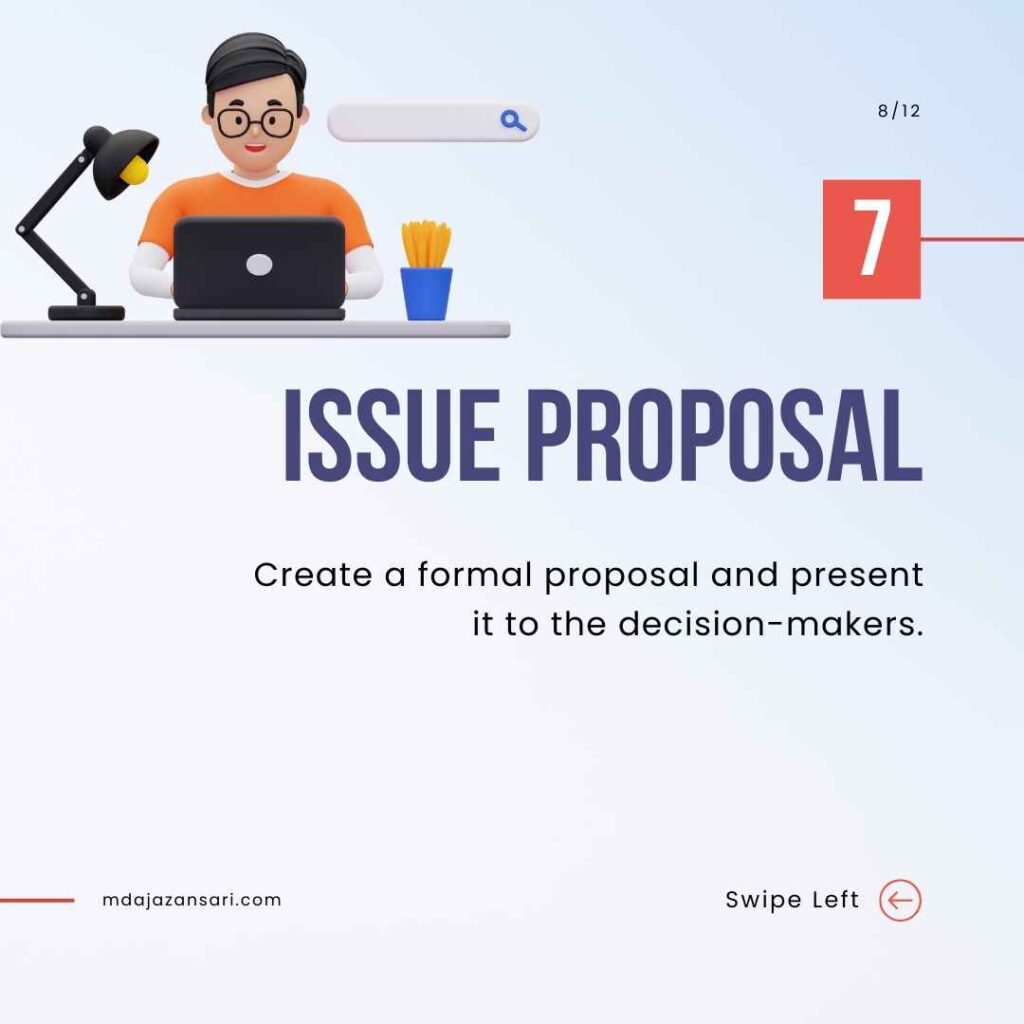
If the prospect is interested, create a formal proposal that outlines the terms of the deal. This document should be tailored to the prospect’s needs and clearly articulate the value of your product or service.
8. Close
Ask for the Business and Close the Deal

It’s the moment of truth. Don’t be afraid to ask for the prospect’s business. Be confident and make it clear that you’re ready to move forward. The closing step is where you turn a lead into a customer.
9. Deliver Product or Service
See Your New Customers Through Fulfillment
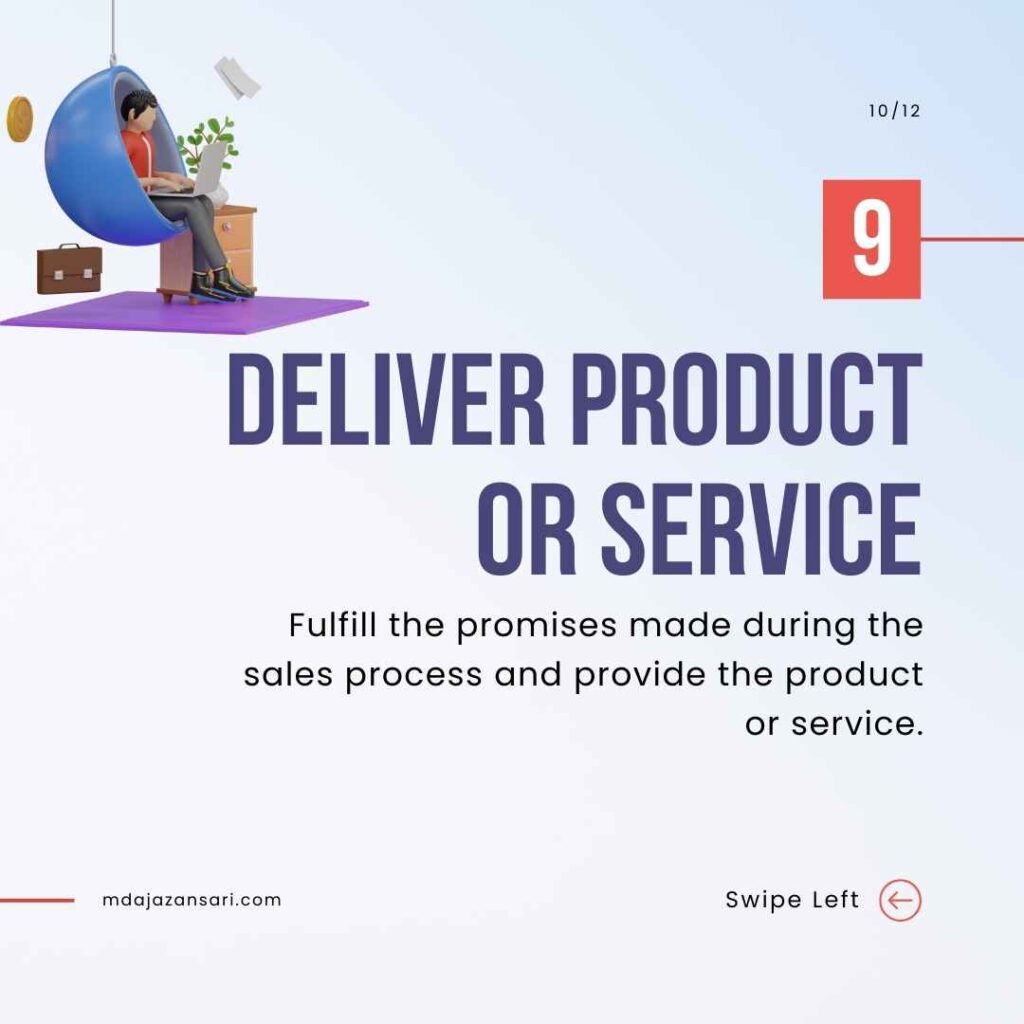
Once the deal is closed, ensure that you deliver on your promises. Provide the product or service as agreed upon and meet or exceed the customer’s expectations.
10. Upsell/Cross-Sell
Follow Up with Your Customer & Expand the Account Over Time
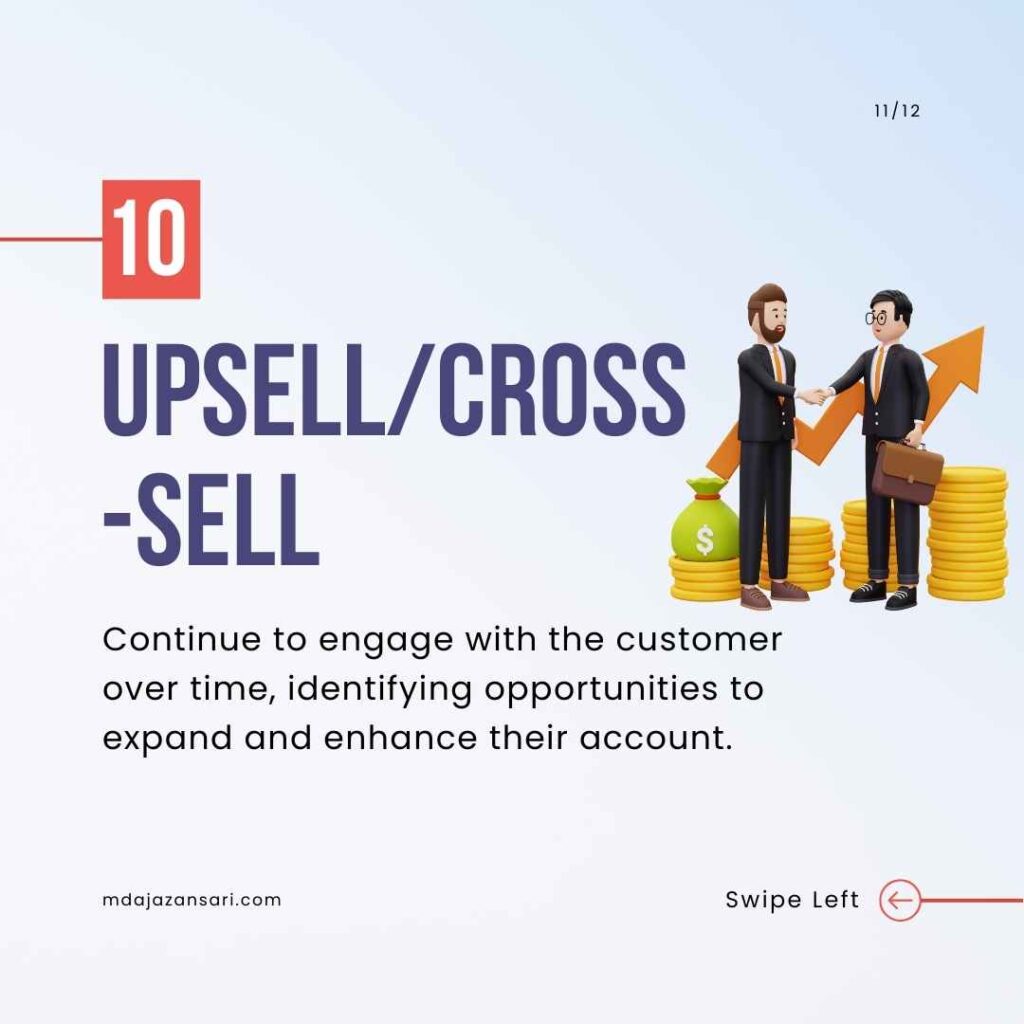
Customer relationships don’t end at the sale. Maintain contact with your customers and identify opportunities to upsell or cross-sell additional products or services. It’s a way to build long-term, mutually beneficial partnerships.
In summary, a well-structured sales process is a roadmap to success. Each step plays a vital role in converting leads into loyal customers. By mastering these ten steps, you can streamline your sales efforts and improve your chances of closing deals and expanding your business.

10 Steps Sales Process PDF: Click Here To Download The PDF
My YouTube Video Recomendation For You
How to Make Money Online: Click Here To Watch The Video









